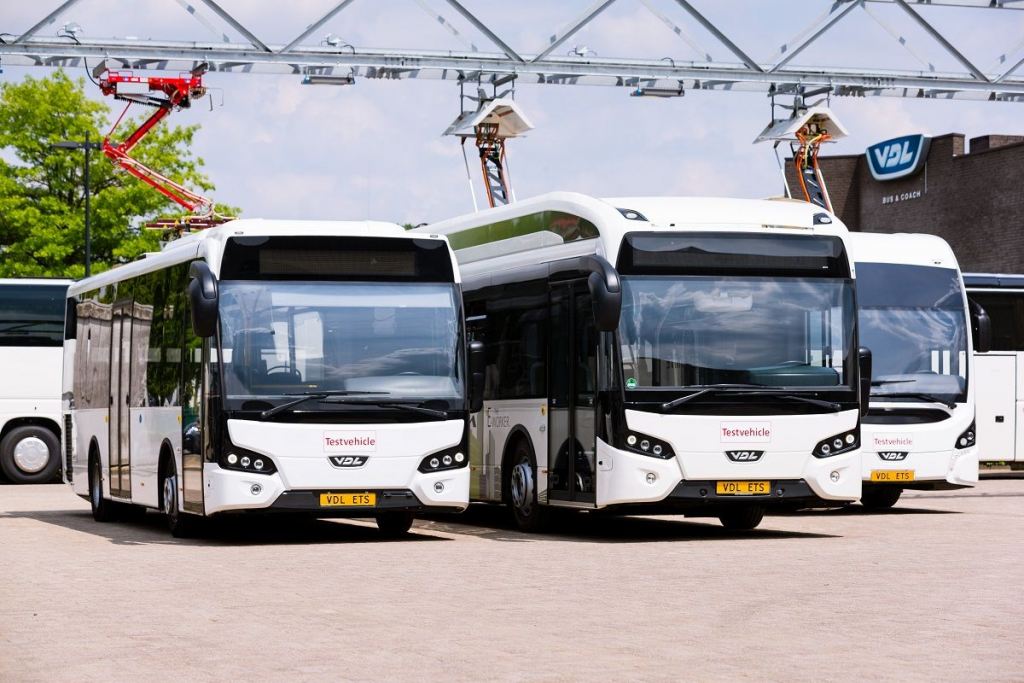
VDL has opened a charging location for electric vehicles on the grounds of VDL ETS (Enabling Transport Solutions) in Valkenswaard. Up to seven vehicles can be charged simultaneously in different ways. The speed at which the transition to sustainable transport solutions is occurring makes it necessary to gain even more insight into the complete chain of electric heavy-duty transport. This insight is of great importance to the further development of VDL Groep’s leading position as a specialist in the electrification of heavy-duty transport vehicles.
Loading facility supplier Heliox from Best is one of the parties involved in this project, as is the case with the other VDL loading facilities.
To allow different autonomous systems, solutions and charging equipment to communicate or work together, the test charging plaza is modularly constructed. The latest charging equipment from the main suppliers is present and can be linked to the various rapid charging connections. In addition to the standard and liquid-cooled charging plugs, various pantograph solutions are available. For example, the four rapid charging locations can be used for simultaneous testing of both vehicle- mounted pantographs and pantographs attached to the infrastructure. With a total available power of 1.4 MW it is no problem to conduct tests with charging powers up to 600 kW and current flows up to 1000 A. For comparison: a special home charger for passenger cars only charges at up to 11 kW.
Unique to the charging square at VDL ETS is that it is not only possible to charge vehicles but also discharge them via the charging infrastructure. After discharging, the energy is stored in a stationary battery pack. This energy storage system will not only be used to test charging systems but also to provide accelerated insight into the aging of battery systems and possibilities to give batteries a ‘second life’. Moreover, the system provides good opportunities to further investigate the load from charging sessions on the electricity grid.







